What you should also know is that, while AI-created content has its uses, it often comes across as somewhat stilted or generic. If you’re aiming to reach actual, live human beings, you’ve got to let yourself be seen down there, inject your writing with some personality.
Humanize AI text-how? This is achieved through manual methods of adding personality, changing to simpler words, using contractions and telling stories so that the text reads more like a chat than a machine print out.
This can be done without any fancy software. The dust has to be beaten off these pages only- no fancy experimental techniques need be applied, old fashioned and proven editing tricks will work just fine.
By making your content less intimidating, you start to develop trust and can keep them hanging around long enough for AI to manage the complexity behind it.
Best AI Humanizer Tools-My Ultimate List
Understanding AI-Generated Content
Computers work this by manipulating data and obeying the rules of language creating machine-produced, A.I.-generated content. Don’t get me wrong, you receive a lot of text very quickly except where it does, which is the spark only humans bring .
Understanding where AI excels or fails also helps in adjusting the outcomes to sound more natural.
The Rise of AI Content
There has been an explosion of AI content of late, due to advances in machine learning and natural language processing. It involves the use of algorithms to comb a vast amount of data in order to detect patterns or language use, and recognize patterns.
Businesses and individual creators rely on AI to reduce the time and cost of production. AI writing can be found in news, marketing, customer support writing – wherever you want to look.
The catch? Just because you can produce some content at blistering speed does not always mean you capture that something special, that human quality.
Common Limitations of AI-Generated Text
AI text has a tendency to sound robotic or, quite frankly, redundant. It lacks the- no real emotions or stories, it lacks a deep understanding.
And sometimes it just spits out facts with not too much context, or the tone is off. It may also draw incorrect conclusions or give you stale information .
As AI doesn’t “think”, but merely mimics patterns absorbed from data, the results may feel dry, generic. It’s also why readers can be put off if the only thing happening is AI.
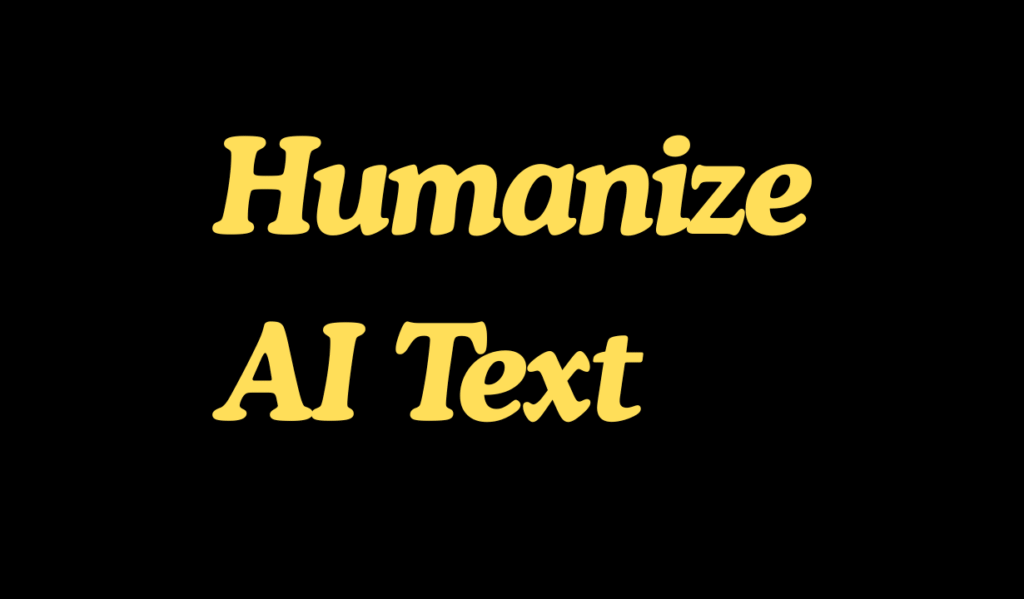
Humanize AI Text- Why It Matters?
Injecting a human touch, in this context, thus also means instilling personal insight, emotion and personality into one’s writing. That’s what gives text its relatability and trustworthiness.
Narratives, opinions, and even some quirky examples make it possible for you to engage your readers. Additionally, search engines favor content that sounds like it was written by a human . If you eliminate the humanizing, your content is flat.
Spotting Robotic Patterns in AI Content
There’s always something that the “AI text” gives away – usually it’s easy to see what is absent from this in comparison to the writing of humans. You can tell it’s doing these things robotically and this helps you adjust in the places that make it feel more natural.
Avoid stilted language, a blizzard of similar sentence patterns, and no distinctive voice.
Identifying Overly Formal Language
AI adores relying on formal language and rigid, stilted phrases that not many of us actually use. It’s all quite high on the precision scale, but not very warm or personal; it’s like reading a manual, rather than having a conversation with someone.
There are also too many “therefore,” “henceforth,” or “subsequently” that can confuse AI detectors like GPT- zero.
Take out “subsequently” and replace it with an even more simplistic, friendlier word – “then” – and the whole thing becomes even warmer.

Formulaic Sentence Structure
AI sentences tend to all sort of look and sound the same. You’ll receive a bunch of average-sized sentences, the same old structure, over and over.
Frequently sentences begin the same way, “This study shows…” or “It is important to note…” That’s not how normal people write.
An AI detector will detect this sameness, and his measurements of things like “burstiness” will be interpreted as being low variability at that point. If you combine your sentences with other types – asking a question, tossing in a short punchy line, or a dependent clause – you’ll break that robot rhythm.
Lack of Personal Voice
AI text often lacks a distinct, individual style. It remains neutral, non-opinionated and non-emotional indicating this in the flatness.
Humans add personality, humor, and your own perspectives – all of which AI rarely gets right. And there is no hedging or uncertainty. AI does not state “Seems like this might be true” but rather says, “This fact is true”.
If the following quotation-taking within an AI chatbot- is any indicator, injecting a little disbelief, two sides to an argument, or rhetorical questions can bring AI content slightly closer to human creation and hopefully keep it at least temporarily off the radar of those searching for it.
Humanize AI Text-Manual Editing Strategies
And then the magic of manual editing happens. You then take the AI created draft and make it cogent, lively, and actually readable.
It is for a consistent vein of thought in the text, breaking up sentence structures, and conversational tone. It’s the reason readers feel as if someone is speaking to them.
Rewriting for Natural Flow
Rewriting is the magic ingredient that makes content sound natural. The AI drafts are a bit wooden and they need to be humanized a little bit.
Chunk long, dense text. Re-order so that ideas are presented in logical sequence. Use simple language and active voice to avoid that robotic feel.
Applying Varied Sentence Structures
Variety is the spice of life. AI thrives on sameness, but humans resent it.
Mix short and long sentences, throw in a question, or experiment with a list. Perhaps begin a sentence differently than how the last one began. It maintains an interest.
Using First-Person and Conversational Tones
The injection of first-person language also gives it a human touch which is mostly absent in AI. Use “I” or “we” to express opinions or experiences.
Opt for a conversational style- use contractions, everyday language, and throw a question or two in there. It feels like a conversation rather than a lecture. Readers sense that and stay.

Humanize AI Text Manually-Pros and Cons
| Aspect | Pros (Advantages) | Cons (Disadvantages) |
|---|---|---|
| Authenticity | Produces content that sounds genuinely human, with natural tone and flow. | Requires strong writing skills to maintain authenticity |
| Bypassing AI Detectors | Manual edits can effectively reduce AI detectability and improve originality scores. | Time-consuming to manually alter enough text structure |
| Control Over Style | Allows full creative control over emotion and phrasing. | Inconsistent results if the writer lacks a clear stylistic direction. |
| Accuracy & Context | You can ensure facts and context remain accurate | Risk of unintentionally changing the meaning or nuance during rewriting. |
| Learning Value | Improves your own writing, editing, and critical thinking skills. | Steeper learning curve |
| Cost Efficiency | No need for paid AI tools | Labor-intensive — takes significantly longer than automated methods. |
| Ethical Writing | Encourages transparency and responsible content creation. | May still require AI assistance for large projects |
Enhancing Readability and Engagement
If you want people to actually read your content, it should appear easy on the eyes and captivating. Works well when you have some structure and can speak the local language.
Personalization and anecdote draw the reader in and keep them engaged.
Breaking Up Dense Passages
i.e. Big blocks of text? No one is interested in reading that s*. Brief paragraphs that only address one idea are much more inviting.
Subheadings are used in order to guide the reader, to indicate the next thing. Bullet points and numbering is used to chunk information, for ease of scanning.
A more significant issue is that it’s just heavy, long blocks of unbroken text. Space things out and readers will stay longer.
Simplifying Complex Language
AI can be tricky and sometimes inserts complex vocabulary, or jargon. Trade those with plain language.
Don’t use jargon unless you are writing for specialists. Short sentences help too – easier to follow. “Use” is always preferable to “utilize”.
Readers are more likely to stay with you if you keep it simple and conversational.
Inserting Anecdotes and Real-World Examples
Content is relatable via stories or real life examples. They take your information and put it into the context of their world for the reader.
Tell a short anecdote or a anecdote about a customer to illustrate the point. Anecdotes contribute personality and warmth that AI isn’t able to simulate.
Abstract ideas do more sense when you can tie them to real world examples. And more importantly it builds a stronger emotional connection, which makes people stick around.

Establishing an Emotional Connection
Generating felt experience on the part of the reader requires some work. It’s really about understanding their emotions and gently manipulating their emotions.
What is the end purpose? Make the writing accessible and engaging so that people want to do engage.
Adding Empathy to Your Message
Writing is not human if not empathetic. Step into the reader’s shoes and speak to what they may be experiencing from their perspective.
Apply phrases such as “many people,” “ought to” or “it is understandable that”. Share a personal or fictional experience in order to add some context.
Being aware of emotions, and gently directing readers, also allows you to better resonate your message with that of your readers’.
Eliciting Reader Emotions Naturally
Don’t be afraid to arouse authentic emotions; tell stories or paint a clear picture. Details provide a mental image and emotional connection to the scene.
Avoid sounding too formal or using generic language. Rather, mix your sentences, add value and let the emotions seep through.
Analogy or metaphor can tell a story and help one to grok even difficult ideas. And that’s how you build empathy and you build a true relationship.
Manual Quality Checks to Bypass AI Detectors
And the best protection against AI is good editing. It’s basically just knowing what these tools are scanning for and tweaking your text to sound more human.
And as redundant as it sounds, one final time read over for authenticity of flow and also just read through, again.
Understanding How AI Detectors Identify AI Content
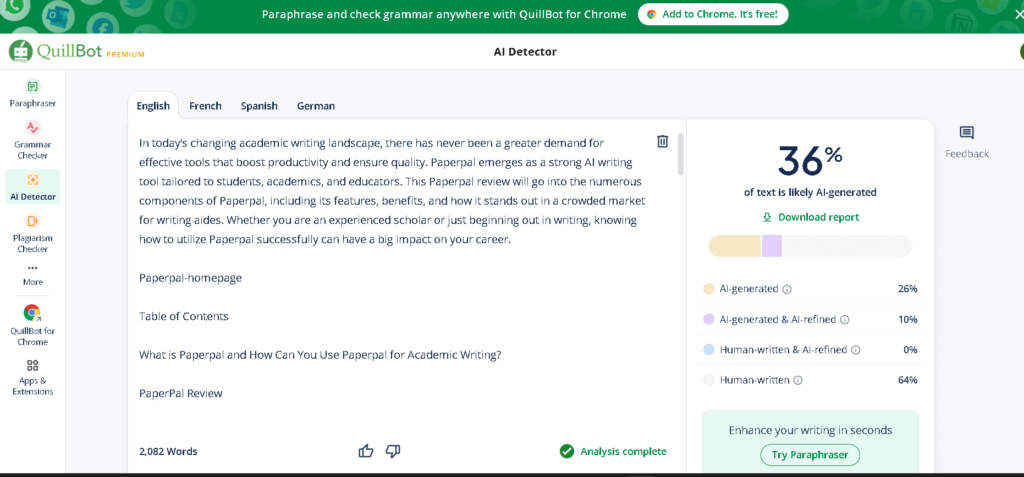
AI detectors aren’t considering only the word text – they look for values like perplexity and burstiness. Perplexity is a measure of how predictable your text is; AI is relatively predictable compared to people.
Burstiness has to do with sentence variety. Actual writers mix short and long sentences, while AI strictly segregates them by length. They also detect monotonous uses of grammar and overtly formal transitions.
Once you understand this you can vary your word choices and sentence flow to disrupt the patterns.
Proofreading Techniques for a Human Touch
Proofreading isn’t just typos.
Move from long to short and simple to complex sentences; insert a simple sentence straight on, followed by a complex one that is embedded.
Place “it seems” or “maybe” style hedges, which sound more human.
Please feel free to provide alternate perspectives or even a bit of critique.
Avoid sounding like a robot or being too sterile. Very careful manual editing also helps to eliminate A.I. Unfortunately, because of this approach, it is sometimes very clear in the text that it is the work of an A.I. output, but I feel it is worth the tradeoff.

Final Review: Authenticity and Clarity
Finally, on your final read, focus on writing clearly and honestly. See, do thoughts and sentences come in a natural conversational way.
Avoid vague or filler language. Ensure that each sentence contributes to your argument.
Read and re-read, often aloud, to pick up on awkward or jarring phrasing. The intent is this to be thoughtful and authentically human rather than appearing wholly produced by ChatGPT.
Avoiding Over-Reliance on AI Humanizer Tools
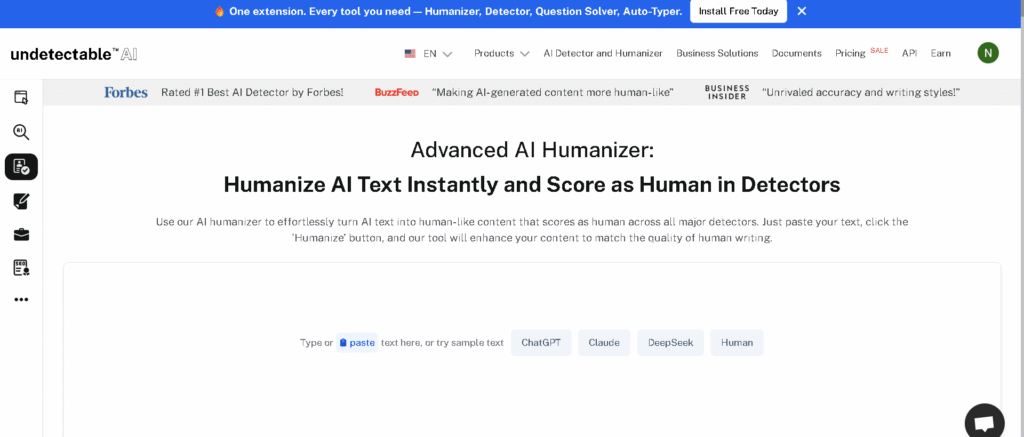
Too much reliance on AI humanizer tools? And it can seriously impact the quality and realness of your own writing. You have to know where these tools are flawed, and frankly human judgment is what gives waiting content feel real and authentic.
Limitations of Automated Humanizing Tools
Robotic audio can be manipulated with AI humanizer tools that change the rhythm, substitute words or edit the tone. But, they are still only algorithms, so the results can sometimes be artificial, or surprisingly inconsistent.
As with anything- overuse reveals them as sounding repetitive or ultimately less natural. Programming can only be so smart; it will never contribute actual personal experience or emotional content.
They’ll overlook the little details – your brand’s voice, or the context your audience is used to. Their job isn’t to correct or free fact-check, and to do so is the quickest way of losing credibility.
To be honest, if you use those devices uncritically, you risk losing that connection with the genuine. One cannot simply trust AI humanizers, one must use them as a first draft and then return to edit it.
The Value of Human Judgment in Editing
Ultimately, human judgment does make a difference, because in many cases AI won’t pick them up. They are able to determine if the tone is right for the audience, or if it really does sound like a person is writing.
They will throw in little details, or snippets of a story, or feeling or emotion that a machine would never come up with. Humans listen more acutely than All can to mistakes, awkward sentences, or boring repetition.
They provide a fact checker and, of course, real examples and legitimate research add credibility. This allows the text to be whatever the writers voice and style want it to be, which I think is really important.
Frequently Asked Questions
In other words, if you want to hand-curate AI content, you should have some semblance of a strategy- things like add some personality, enhance the articulation and write like people actually relate. Attentive editing, varying sentence construction, and being aware of one’s audience all go a long way towards creating a piece that sounds natural.
What are effective strategies for making AI-generated text sound more human-like?
Use first person language or just drop in a random short personal story and try and sound conversational. Vary the length of your sentence and let the emotion or even humor come through.
Dividing long paragraphs and simplicity of language will greatly aid your story being read and will keep readers interested.
Can you manually adjust AI-generated content to make it undetectable as AI-created?
Yes you can vary from your normal sentence structures and incorporate some of those little things humans actually say – some unique insights, emotional layers, or details that make sense to the context.
Reading your writing aloud helps you to catch phrasing that is awkward and change it.
What are the best practices for infusing human elements into AI content without the use of tools?
Keep it crisp, structured and with a pinch of personality. Point your content at what your audience finds important.
Be specific, use examples that are understandable, and wherever possible, avoid jargon. It is important to be consistent and maintain tone and to use real, authentic language in order to build trust.
How do you adapt AI-generated scripts to reflect natural human speech and writing patterns?
Help with contractions, a casual turn of phrase, or an occasional interruption to make the scripts sound more natural. Most sentences are short, and lengthier ones appear just often enough to reflect natural spoken language.
Feel free to insert a lull, a question, or a bit of a filler – conversation isn’t always perfectly fluid.
Are there any techniques to manually edit AI code to behave more like a human?
Much of this output will not be even in the code itself, but rather modifying the output text. Liven up the experience, add a hint of feeling and make the responses less predictable.
Work to interject your own viewpoint, and delete cliche. That, of course, requires more specialized programming skills to actually alter the behaviors of the AI at the code level.
In what ways can you improve the relatability of AI content for better audience engagement?
Understanding your audience is also what will inform your ability to make content relevant. Stories, analogies, and those little day-to-day examples- these really help people connect.
It’s just more inviting if you write with some warmth and directness. And frankly, keeping it grounded in what is really happening in the world right now? That never hurts.

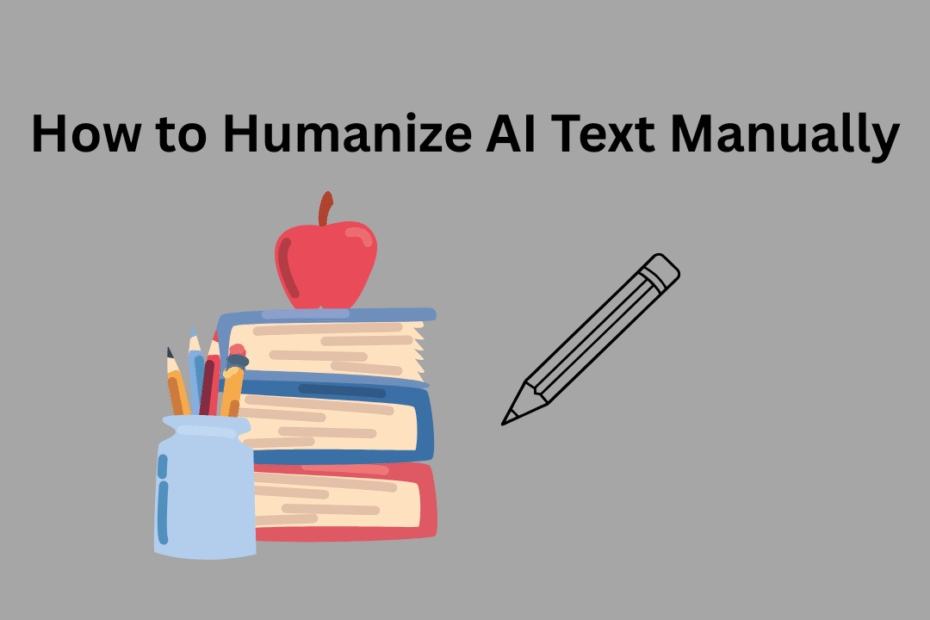
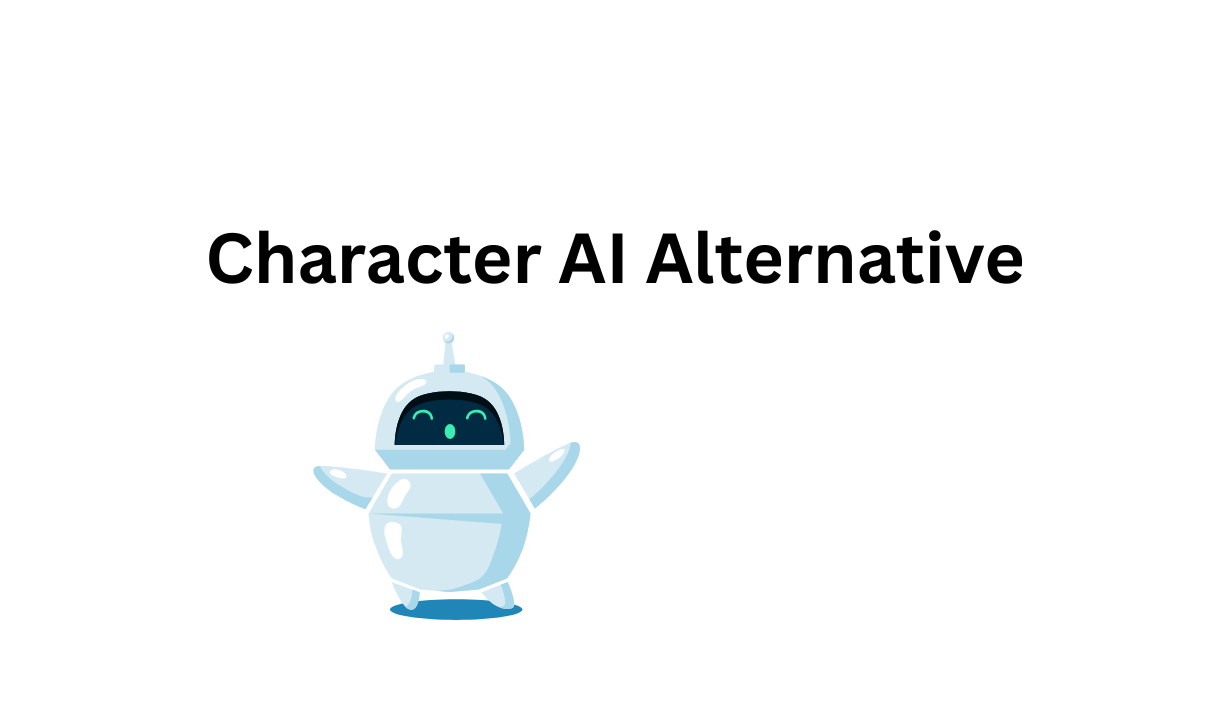


Fantastic site A lot of helpful info here Im sending it to some buddies ans additionally sharing in delicious And naturally thanks on your sweat